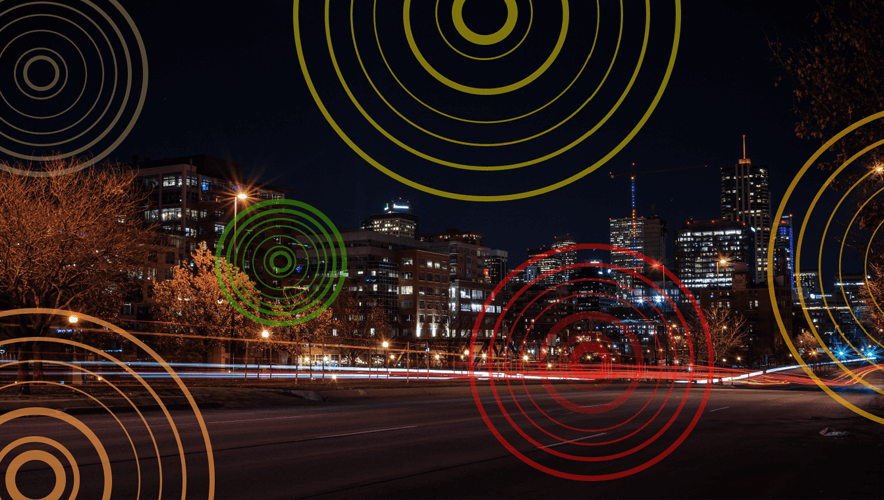Spot the Shots
Solving a shooting means more than just catching the person who fired the gun. Shell casings left by gunfire often give important clues to investigators, who can trace the casing back to the weapon used to fire it.
So, when the Denver Police Department deployed shot-spotting technology in its districts with the most gunfire, the department knew it had an opportunity to add to its investigative abilities.
"When cops go to the scene of a shooting, they are fairly certain there are shell casings in that area, so they try to find them, rather than just rolling by," says Lieutenant Aaron Sanchez of the Denver Police Department. "Because ShotSpotter triangulates to about nine to 25 meters from where the gunshots were heard, the officers go to that specific point, work their way out a little bit, and then recover those shell casings," he says.
Detectives can merge the shell casing number with information from the U.S. National Integrated Ballistic Information Network (NIBIN), which tracks weapons usage. Denver's police department has a program with the U.S. Bureau of Alcohol, Tobacco, Firearms, and Explosives (ATF) to submit NIBIN numbers to federal law enforcement.
"NIBIN is basically the fingerprint of a gun," Sanchez explains. "We set up an entire protocol on how to search for, recover shell casings, and separate them in case there's a couple different weapons, and how to place those into evidence so they go to our ATF contractors."
ATF then provides Denver police with more information on where that weapon's shell casings have previously been recovered. "We can place that gun at the shooting, and that information goes to whatever investigative team needs it."
ShotSpotter works by detecting gunfire, which has to hit three different audio sensors installed around the monitored area. When the correct succession of sensors goes off, a ShotSpotter technician reviews the audio to verify it is indeed gunfire. The technician then tells police that there have been shots fired, and an alert is sent out to officers on patrol.
The department's data analysis unit identified the three geographical areas in Denver where gunfire, 911 calls related to gunshots, and gang violence are the highest. ShotSpotter was installed in those three neighborhoods in January 2015, April 2016, and August 2016, respectively. In January 2018, the department expanded the technology to a fourth neighborhood.
ShotSpotter sent engineers to install the sensors in the appropriate areas. "ShotSpotter goes throughout the community, and it tries to put the sensors on public locations, but from time to time we have to go into a neighborhood and ask people to put them on their houses," Sanchez says, noting the community was relatively receptive to the installations. "We thought it was going to take time, but within about two days, we had the houses that we needed."
Even the timing and succession of gunfire have played a role in bringing criminals to justice. ShotSpotter stores the recordings so that investigators can look back as long as the technology has been around. This helped Denver police solve a crime that was close to being ruled as self-defense, Sanchez says.
At a family gathering in a Denver neighborhood, a man shot another man, who died. The man who survived claimed it was in self-defense, saying he had just been shot moments before by the victim. Homicide detectives knew ShotSpotter was installed in that part of the city, and decided to pull the audio to verify the man's story.
"So what they hear when they pull out ShotSpotter is one shot fired–boom–that's the shot that shoots the first victim," Sanchez says. "There's then a five-minute gap, and then there's shots fired again."
Investigators were able to piece together that after being shot, the man had actually left the gathering to obtain a weapon. He came back, and killed the victim. "So now there's premeditation. It wasn't self-defense, and the only way homicide knew that was the differential in time," Sanchez notes. "We brought back all the witnesses who said 'yes, that's the way it happened.'"
Denver police have access to a mobile app from ShotSpotter available on the iTunes store and Google Play. The app alerts officers when there are shots fired and displays the location on a map. A report view allows officers to review incidents from the last 24 hours, three days, or seven days and listen to the audio. "If the ShotSpotter app is on their phone, officers are getting that information within 30 to 45 seconds from the time shots were fired," Sanchez notes.
ShotSpotter also keeps a historical record of all gunfire since the time the technology was installed. In one case, a man growing marijuana on his property was arrested for shooting two youths who were trespassing. A witness made the remark that the shooting was "just like last year." Using ShotSpotter's historical record and investigating further, police were able to trace yet another shooting back to the same gunman.
In rare cases the technology picks up on a false alert that isn't truly gunfire, like the time a local man set off a propane bomb. In one homicide case, the gunshots set off several sensors when the noise echoed through a canyon, but failed to triangulate. "The sensors picked up the shooting for a mile and a half, but not just three sensors–a whole bunch of sensors," Sanchez notes. The homicide unit was still able to use that information in its investigation.
Sanchez emphasizes that ShotSpotter combined with other investigative tools is what helps the department solve crimes. "When you just take ShotSpotter for what it is, it detects gunshots…So we're using the technology as part of a bigger investigative strategy."
For more information: Jane Soderberg, [email protected], www.shotspotter.com, 720.361.6866
